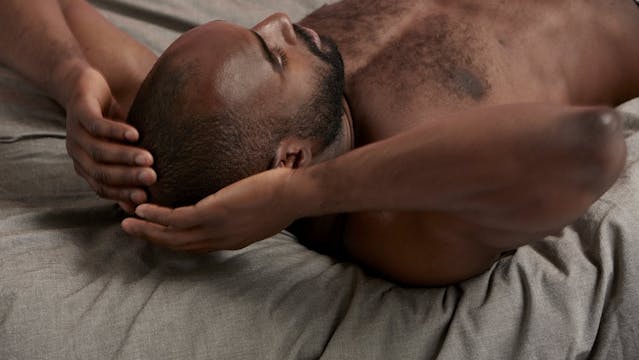Hair thinning has left men scratching their heads over cures for the condition since 1550B.C.
The Ebers Papyrus, an ancient Egyptian medical text, suggests boiling porcupine hair in water and applying it to the scalp for four days. Julius Caesar supposedly wore a laurel wreath not to display his power and dominance, but simply to cover his balding head.
Although advances in modern medicine mean you no longer have to grind donkey teeth and boil them in oil to “cure” your thinning hair, the age-old questions still remain on the tips of many men’s tongues: “what causes hair thinning?” and “how do I stop it?”
In this article, we look at what causes hair thinning and how to treat it – without needing to resort to any strange DIY cures.
What causes hair thinning?
There are many reasons why hair might start to thin. Some of the most common causes of hair thinning include:
- Genetics and changes in hormones: Hair may look thinner as a result of the onset of male pattern baldness (also known as androgenetic alopecia). Male pattern baldness is characterised by the gradual miniaturisation of one’s hair, which results in hair appearing “thinner, shorter, and paler”.
- Stress: Telogen effluvium – a type of hair loss that can make the hair appear thinner – can occur after a traumatic event or prolonged periods of stress. Stress can disrupt the normal rhythm of the hair growth cycle (the cycle through which hair naturally grows and falls out) and cause your hair to enter what is known as the “telogen phase”. During this phase, hair is released from the scalp and falls out. If enough hair is released during this phase, then this may make the hair appear thinner.
- Hairstyles and hair treatments: Some hairstyles such as cornrows and pigtails may cause a type of hair loss called traction alopecia. The constant pulling force exerted by these hairstyles can cause one’s hairline to recede, making hair look thinner.
- Medication: Some types of medication, such as anticoagulants and blood pressure medication, can cause hair loss as a side effect.
How do I stop hair thinning?
There are a variety of treatments that help slow the process of hair thinning. Some hair thinning treatments may even promote hair regrowth. Treatments to help reduce hair thinning include:
- Finasteride: This little red pill helps to prevent hair thinning because it blocks the production of a molecule called dihydrotestosterone (DHT). DHT is believed to be one of the causes of male pattern baldness. It alters the hair follicles on the scalp, making hair appear shorter and thinner. Finasteride prevents the formation of DHT, slowing the process of hair thinning and, in some cases, encouraging hair regrowth.
- Minoxidil: Minoxidil is a liquid or foam that is applied directly to the hair to prevent hair thinning and hair loss. It takes at least six months for minoxidil to have an effect on hair thinning and hair regrowth.
- Reducing stress: Regulating stress levels may help to reduce stress-related hair thinning. Treatments like cognitive behavioural therapy (CBT), meditation, and acupuncture might help to reduce stress. Some medication may also help to reduce stress, but some antidepressants can further contribute to hair loss.
- Changing hairstyles: Avoiding hairstyles that pull hair tightly on the scalp – like braids and cornrows – might help reduce hair thinning caused by traction alopecia.
The numan take
Hair thinning can be caused for a variety of reasons. Genetics, stress, and even certain hairstyles can all contribute to the thinning of one’s hair.






